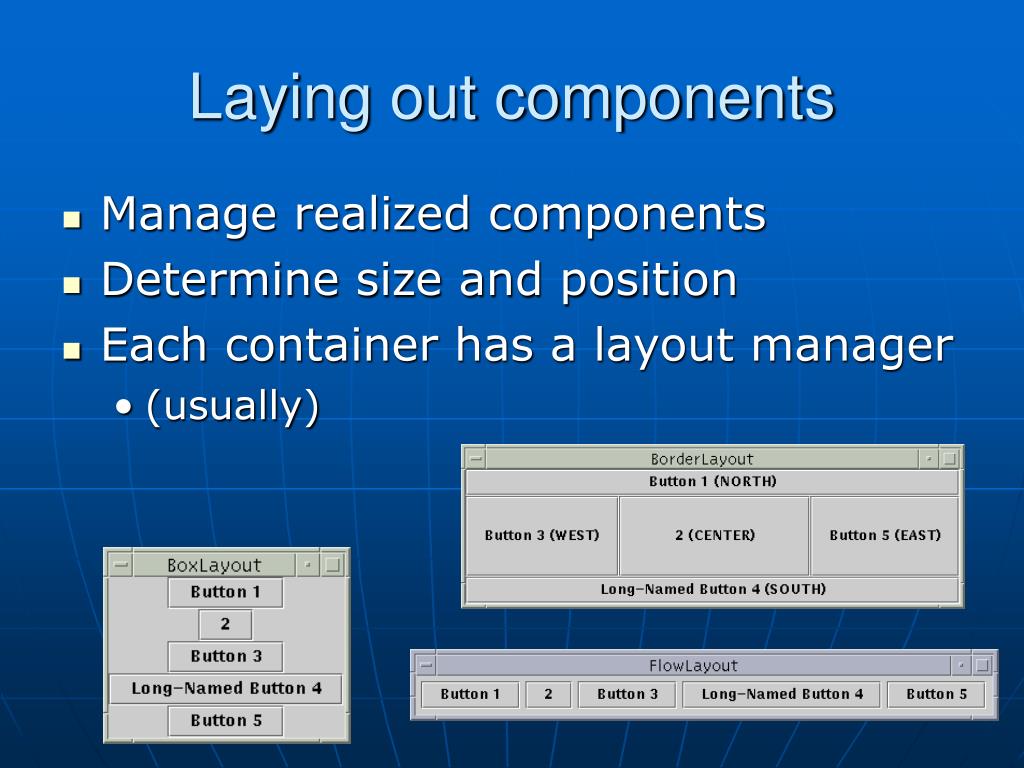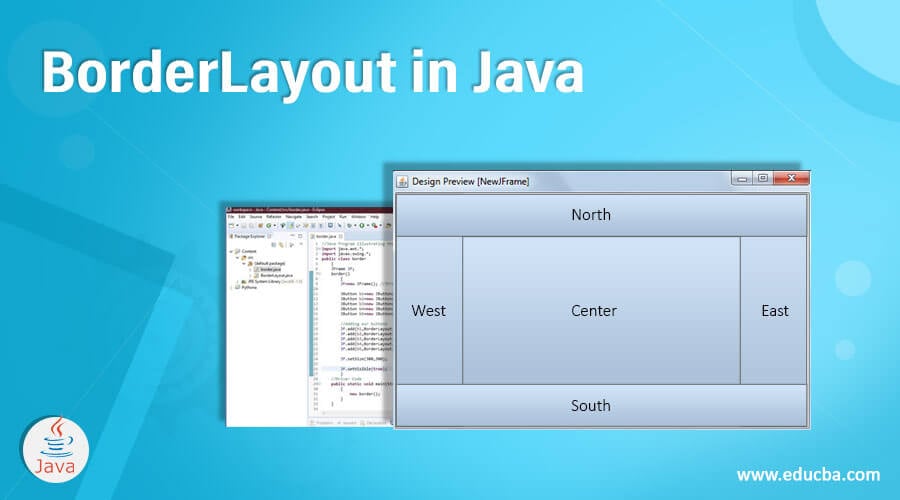
Where each one has its own LayoutManager. Possible to use a number of Panel objects in a given display, Kind of layout manager or not composing your user interface properly. If you find yourself fighting with a layout managerīecause it's changing the size of one of your components, you are probably using the wrong Methods of a component, but you should do this only if you are actually specializing theĬomponent, and it has new needs. The sizes of components according to its scheme. Preferred or minimum sizes of the child components. It usually begins by looking at its container's dimensions, and the When a layout manager is called to arrange its components, it is working Preferred size that is reported by its own container to that container's parent. Based on those values it also calculates the It asks the components in its container for their preferred (or The layout manager is therefore involved in both May hold its own components and want to arrange them in its own layout, its preferred size Same meaning as for any other type of component. The preferred size of a Container object has the Unfortunately, the current set of layout managers doesn't do anything To report the largest size it considers acceptable. (perhaps it has to scale up an image) it can use getMaximumSize()

Particular component might not be able to display itself properly if it is too large The button's minimum size and guarantee that it has at least that much space. The layout manager might show more respect for Size in order to display itself properly.

Now, if we give the button a label, the button may need a minimum Manager might use this size when there are no other constraints, or it might ignore it,ĭepending on its scheme. However, theīutton's designer can provide a preferred size for a good-looking button. For example, a plain Button object can normally be sized to any proportions. These are reported by the getMinimumSize(), getMaximumSize(), and getPreferredSize(), The layout manager in placing and sizing it: a minimum size, a maximum size, and a Holding all its components at their preferred sizes.Įvery component determines three important pieces of information used by Calling pack() sets the window's size so it is as small as possible while Subclass of the Window class (which include Frame)Īre automatically validated whenever they are packed or resized. AĬontainer is layed out the first time it is displayed, and thereafter whenever theĬontainer's validate() method is called. The individual child components to arrange them in the container's display area. (usually when it is validated), to reorganize the contents. You do need to know what the layout manager is going to do with your components as youĪs I explained earlier, the LayoutManager isĬonsulted whenever a container's doLayout() method is called Need a reference (a notable exception for CardLayout). You rarely call the layout manager's methods directly, so you don't usually Installed a layout manager, it does its work behind the scenes, interacting with theĬontainer. Associate buttons with event handler object and add them to grid (left->right, top->bottom)įor ( int count = 0 count < names.Notice that we call the BorderLayout constructor,īut we don't even save a reference to the layout manager. Create a ButtonEventListener object (to be shared by all 3 buttons)ĪctionListener buttonListener = new ButtonEventListener() GridLayout2 = new GridLayout( 2, 3, 5, 5 ) // 2 rows x 3 columns 5 pixel gaps between cells GridLayout1 = new GridLayout( 3, 2 ) // 3 rows x 2 columns no gaps between grid cells We will alternate between a 2x3 and 3x2 grid layout when any button is clicked. Public class FlowLayoutFrame extends JFrame When you test it, try resizing the window to see how the widgets are automatically “re-flowed” within the window. The following example includes three JButtons to demonstrate the different ways that widgets can be aligned using FlowLayout. Components may be left-aligned, centered (the default), and right-aligned. When the edge of the container (e.g., JFrame or JPanel) is reached, the components continue to display on the next line. Using FlowLayout, GUI components are arranged in a container from left to right in the order in which they are added. FlowLayout ManagerįlowLayout is the simplest layout manager, and the default for JPanel objects. Let’s study each one with a good example.

Set the layout manager to use the default flowlayout how to#
Today we’ll look at three commonly used layout managers, then talk about how to create more complex user interfaces by nesting them. This allows us to focus on the basic look-and-feel of our interface, but lets the layout manager handle most of the pesky details. Layout managers are used to organize widgets so that you don’t have to specify the exact arrangement and positioning of every GUI component, especially as the window is resized.


 0 kommentar(er)
0 kommentar(er)
